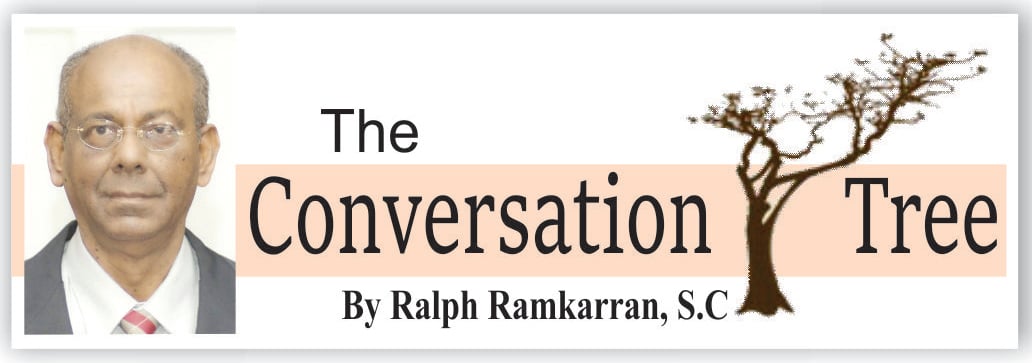June 13 marks the 42nd anniversary of the assassination of Walter Rodney, described by Martin Carter as killing “the origin of rain.” The struggle for official recognition of Walter Rodney’s contribution to the freedom of Guyana has been long and arduous. Revered even in his lifetime for the bold and courageous deployment of his dynamic leadership and intellect in the service of Guyana’s working people, he posed a challenge to authoritarianism by inspiring Guyanese of all races to demand their liberty.
By 1980 Guyanese were conscious of the dangers of political activities that challenged the rulers. On July 19, 1979, Father Bernard Darke had been knifed to death by the House of Israel, while taking photographs at a WPA sponsored demonstration on Brickdam, in the mistaken belief that he was Father Andrew Morrison, the editor of the Catholic Standard, which had become a standard bearer in the fight against dictatorship. As resistance mounted, the House of Israel had been slowly transformed from the early 1970s into a terror unit which was active in violently breaking up opposition political meetings. It was the head of this notorious, murderous, organization, Rabbi Washington, a fugitive from justice in the US who, having been convicted of murder after the death of Burnham, met with Father Morrison at the chambers of lawyer Miles Fitzpatrick and reportedly identified the person, then still alive and still in the hierarchy of a political party, who had instructed him to murder Father Morrison. It was Father Morrison who was referred to as “a cassocked obscenity” in the National Assembly by Desmond Hoyte.
There had been murders before. There was the killing of Kowsilia on March 6, 1964, a sugar worker on strike at Leonora, smashed by a tractor driven by a strike-breaking scab; that of the Ballot Box Martyrs, Bholanauth Parmanand and Jagan Ramessar, on July 16, 1973, who, shot by the police protesting the rigging of the elections, bled to death at the back of a truck on which they were thrown, as it collected fraudulent ballot boxes around Corentyne; the WPA members, Ohene Koama and Edward Dublin, on November 18, 1979, shot on the streets of Georgetown. There were others, less well known. By this time, the then avuncular Forbes Burnham, astride his steed around Georgetown, doling out cigarettes to the nicotine starved populace, had long been transformed into the man of steel, informing his adversaries that “my steel is sharper.”
Walter Rodney returned home in 1974, a crucial time. Refused a job at UG, he faced the challenging task of mobilizing Africans and Indians. He upturned Stokely Carmichael’s refusal to embrace Indians under the Black Power umbrella by modifiying his Pan-Africanist ideological leanings, already infused by him. As part of the oppressed Guyanese working class, Guyanese Indians willingly gave of their sympathy to the work of Walter Rodney.
His views on race resonated: “No ordinary Afro-Guyanese, no ordinary Indo-Guyanese can today afford to be misled by the myth of race….Does it have anything to do with race that the cost of living far outstrips the increase in wages? Does it have anything to do with race that there are no goods in the shops? Does it have anything to do with race when the original lack of democracy as exemplified in the national election is reproduced at the level of local government elections? It is clear that we must get beyond that red herring and recognize that it is intended to divide…The losers [in the 1960s] were those who participated, who shared blows and got blows. And they are the losers today. It is time that we understand that those in power are still attempting to maintain us in that mentality – maintain us captive in that mentality where we are afraid to act or we act injudiciously because we believe that our racial interests are at stake.” He joined with the PPP in its epic struggle to free Arnold Rampersaud of false murder charges and condemned the government for pressuring African Guyanese witnesses to lie against an Indian brother.
Although the PPP had worked closely with the WPA and Rodney during his lifetime and continued to work with the WPA long after June 1980, PPP governments were slow to institutionalise recognition of Rodney. There were obstacles. Gregory Smith, his killer, was hiding out in French Guiana. The French opposed his extradition on the ground of the existence of the death penalty in Guyana. The dropping of the murder charge against Smith and institution of a manslaughter charge, an obvious solution, which I repeatedly advocated, was not pursued.
The PPP wasted much time in negotiating with the WPA after it had aligned itself with the PNC and had begun to slow dance over the inquiry into the assassination. In this process the PPP unfortunately abstained in a Parliamentary resolution for an inquiry into Rodney’s death, when the Opposition, including the WPA, insisted in removing the word “assassination” from the motion. It is only when President Ramotar went directly to Ms. Patricia Rodney that an inquiry was mounted and concluded.
The Attorney General, Mr. Anil Nandlall, is finally spearheading the steps of the Ali government to officially elevate the life and work of Walter Rodney to national prominence and recognition.
This column is reproduced, with permission, from Ralph Ramkarran’s blog, www.conversationtree.gy






